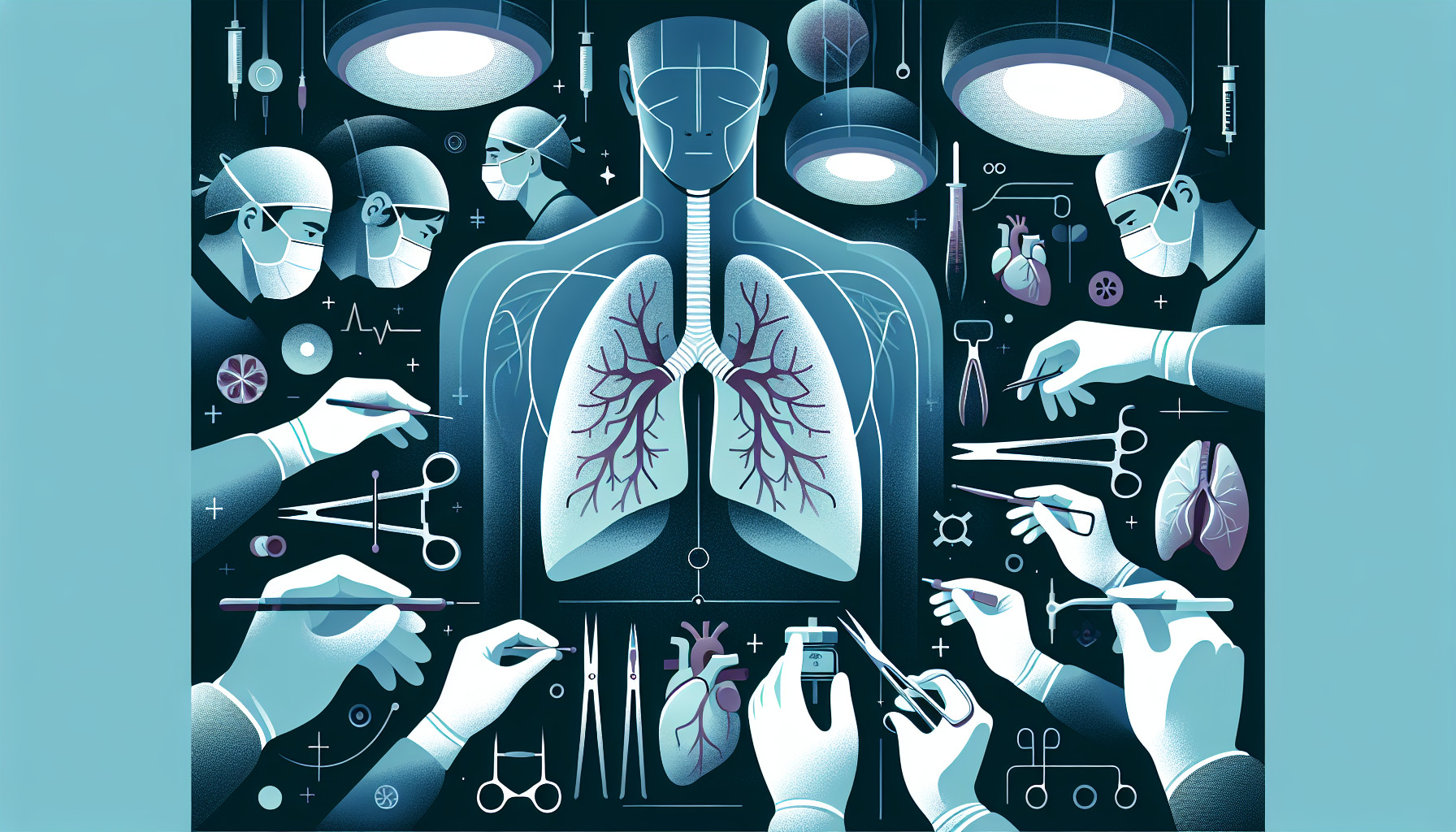Our Summary
This research paper discusses the different types of infections that can occur in people who have had a heart or lung transplant and are in the intensive care unit (ICU). The article looks at how common these infections are, what factors increase the risk of getting them, the specific symptoms that can occur, and the most common types of infections that can take advantage of weakened immune systems. The paper also provides some practical suggestions for managing these infections based on observations and evidence.
FAQs
- What are the most common infections in heart and lung transplant recipients?
- What are the risk factors for infections in heart and lung transplant recipients?
- How are infections in heart and lung transplant recipients managed in the intensive care unit?
Doctor’s Tip
A doctor might tell a patient undergoing a lung transplant to diligently follow the prescribed medication regimen to prevent infections, as the immune system may be weakened after the surgery. It is important to practice good hygiene, avoid contact with sick individuals, and stay up to date on vaccinations to reduce the risk of infections. Regular follow-up appointments and communication with the healthcare team are also crucial for monitoring and managing any potential complications.
Suitable For
Patients who are typically recommended for lung transplant are those with end-stage lung disease, such as cystic fibrosis, emphysema, pulmonary fibrosis, or pulmonary hypertension. These patients have severe limitations in their daily activities and quality of life, despite optimal medical management. They may also have a limited life expectancy without a lung transplant. Additionally, patients must meet specific criteria for lung transplant eligibility, including being medically stable enough to undergo the surgery and able to comply with post-transplant care and medication regimens.
Timeline
Before lung transplant:
- Patient is evaluated by a transplant team to determine eligibility for surgery.
- Patient undergoes a series of tests and examinations to assess their overall health and suitability for transplant.
- Patient is placed on a waiting list for a donor organ.
- Patient may experience worsening symptoms and complications of their lung disease while waiting for a transplant.
After lung transplant:
- Patient undergoes surgery to receive a new lung or lungs.
- Patient is closely monitored in the intensive care unit for any complications or signs of rejection.
- Patient is started on immunosuppressive medications to prevent organ rejection.
- Patient may experience infections due to their weakened immune system.
- Patient undergoes regular follow-up appointments and monitoring to ensure the success of the transplant and manage any complications that may arise.
What to Ask Your Doctor
- Am I a candidate for a lung transplant?
- What is the success rate of lung transplants at your facility?
- What are the potential risks and complications associated with a lung transplant?
- How long is the recovery process after a lung transplant?
- What medications will I need to take after the transplant?
- How will the transplant affect my lifestyle and daily activities?
- What are the signs of rejection and how will they be monitored?
- How often will I need to follow up with you after the transplant?
- What resources are available for support and education post-transplant?
- Are there any specific precautions or lifestyle changes I need to take to protect my new lungs?
Reference
Authors: Alsaeed M, Husain S. Journal: Infect Dis Clin North Am. 2024 Mar;38(1):103-120. doi: 10.1016/j.idc.2023.11.003. PMID: 38280759
